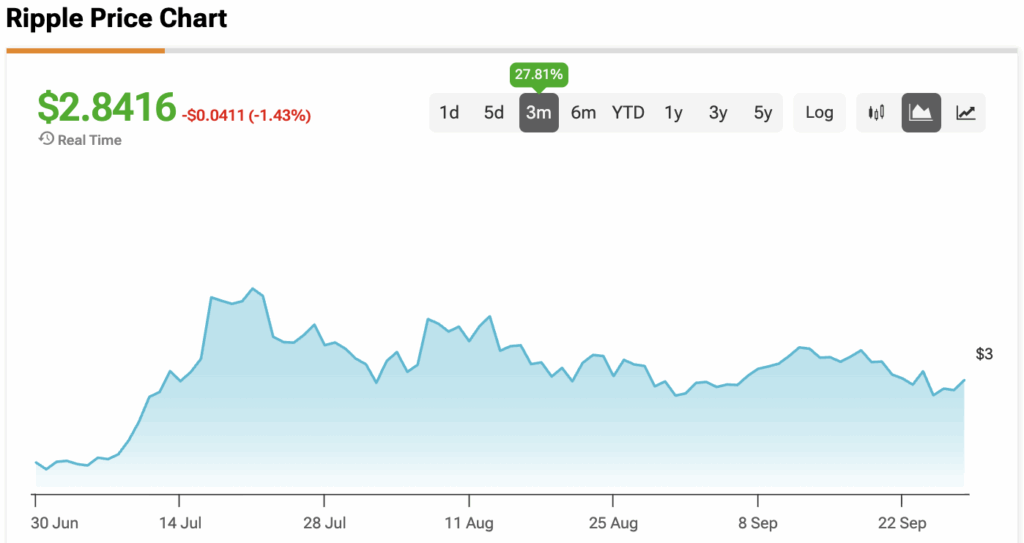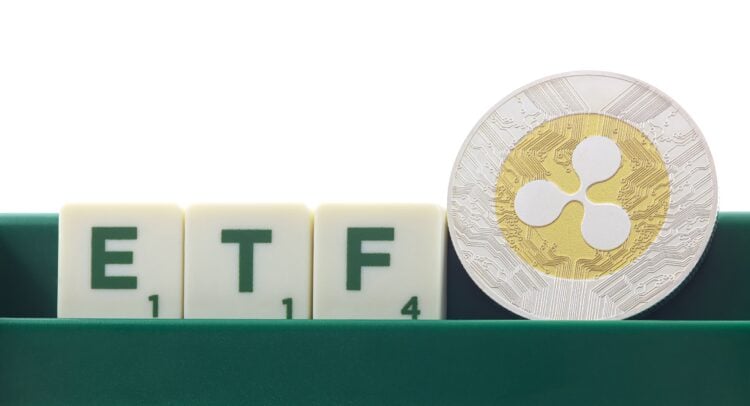With all the XRP (XRP-USD) ETF filings underway, October could decide whether XRP becomes a mainstream investment product or stays stuck on the sidelines.
Elevate Your Investing Strategy:
- Take advantage of TipRanks Premium at 55% off! Unlock powerful investing tools, advanced data, and expert analyst insights to help you invest with confidence.
When asset managers file for crypto ETFs, it usually means an asset is crossing from niche into the mainstream. Bitcoin and Ethereum ETFs are already live in the U.S., pulling in billions from institutions and retail investors alike.
Now it’s XRP’s turn. Despite years of legal battles with the SEC and lacking Bitcoin’s cultural clout, XRP has drawn seven active ETF applications under review. This includes filings from major names like WisdomTree, 21Shares, and Bitwise.
Some proposals go beyond basic price tracking. Amplify, for example, wants to combine XRP exposure with covered call strategies to generate yield. Others are pushing leveraged or derivative-based structures. Together, the influx of filings shows that fund managers believe investor demand is there.
October Brings a Crucial Test
The SEC is scheduled to rule on six XRP ETFs between Oct. 18 and Oct. 25. Decisions from Grayscale, 21Shares, Bitwise, Canary, WisdomTree, and CoinShares all fall within that week.
At the same time, Ripple is awaiting a decision on its application for a national bank charter. Approval would allow it to operate as a federally supervised banking institution, adding credibility to XRP’s role in payments and custody.
Analysts say the combination of ETF approval and a bank charter would cement XRP as both investable and operationally essential. Even one approval would spark momentum, but a double rejection could leave XRP’s progress stuck in limbo.
Why Some See XRP as the Dark Horse
Skeptics argue XRP lacks the brand power of Bitcoin or Ethereum. But ETF specialist Nate Geraci thinks the critics are missing the bigger picture.
“People are severely underestimating investor demand for spot xrp & sol ETFs,” he said, noting how doubts about Bitcoin and Ethereum ETFs quickly disappeared once billions flowed in.
The market is already sending signals. CME XRP futures have crossed $1 billion in open interest, the fastest growth for any crypto derivatives contract. Canary Capital projects up to $5 billion in initial ETF demand, while JPMorgan (JPM) puts the figure closer to $8 billion annually.
Even before approval, investors have committed $380 million into XRP-related ETF-like products, proof that capital is ready to move.
Not Everyone Is Convinced
Some major players remain hesitant. BlackRock (BLK) has explicitly said it won’t pursue an XRP ETF, citing “limited client interest” and regulatory uncertainty. This stance shows the risks. Without broad institutional buy-in, inflows may be weaker than bulls hope.
Analysts are also divided. One strategist warned an XRP ETF could “mark the beginning of the end,” arguing it may fail to deliver long-term returns.
Meanwhile, XRP’s price action reflects uncertainty. The token has been bouncing between $2.75 and $2.88, with more than $1.9 billion in liquidations in recent weeks. Yet institutional wallets have quietly accumulated nearly $928 million worth of XRP, signaling confidence behind the scenes.
Key Takeaway
XRP’s fate is now tied to October’s SEC rulings and Ripple’s bank charter bid. A green light could push it into the mainstream alongside Bitcoin and Ethereum, while a setback risks cementing skepticism. Either way, Wall Street’s so-called dark horse is entering a decisive chapter.
At the time of writing, XRP is sitting at $2.8416.

















